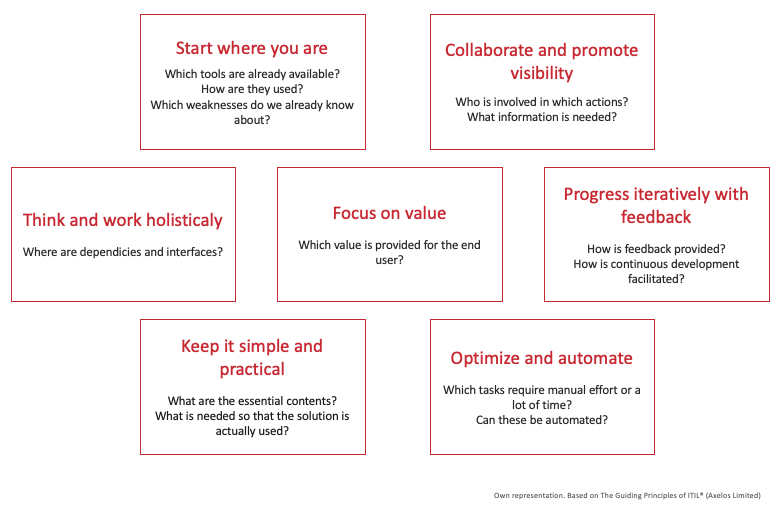2023-08-02 | Scandio | 3 min read
ITIL®: ever heard?
What is ITIL®?
What's ChatGPT's suggestion:
ITIL®, acronym for Information Technology Infrastructure Library, is a set of best practices and guidelines for managing and delivering IT services. ITIL was created in the 1980s by the UK government's Central Computer and Telecommunications Agency (CCTA) and has since been adopted by organizations around the world.
It provides a framework for IT service management (ITSM) that covers the entire lifecycle of IT services, from strategy and design to operations and improvement. The framework includes a set of processes, procedures, tasks, and checklists that can be customized to meet an organization's specific needs.
ITIL focuses on aligning IT with t
he needs of the business, improving service quality and efficiency, and reducing costs. It also emphasizes the importance of continuous improvement and customer satisfaction. ITIL is considered a de facto standard for ITSM and has been used by organizations in various industries, including healthcare, finance, and government.
We could hardly have summarized it better - ChatGPT is definitely very helpful for such summaries (even if you should of course always check whether the contents are correct).
We would add that the framework was primarily developed for various IT support processes, but can also be used for other areas in a modified form. The original framework has already been updated four times - "PeopleCert" is now responsible.
In 2020, the latest version, ITIL® 4, was published. This version includes, in particular, adaptations to the (generally) increasingly agile processes in the business world. For example, iterative approaches and the promotion of transparency are taken into account.
What are concrete contents?
The framework defines terms such as Incident, Service Request, and Change Request. In addition, various practices describe assistance for the use and implementation of these elements.
It is important to note that in ITIL® 4 - in contrast to the previous versions - only recommendations and no concrete instructions for action are listed.
In the practices there is for example explained, how incident or problem management can be implemented and how they differ. This helps to differentiate and classify tickets in daily use as well.
The best way to implement this distinction is to use practical experience in conjunction with this guide.
Furthermore, ITIL®4 works with so-called value streams and not with predefined processes. The value streams range from the point of entry, the demand, to the generation of value for the end user. They consist of several activities of the so-called value chain model (Service Value System), which are iterated through depending on the case.
In the 7 Guiding Principles of ITIL®4 there are used elements of the PDCA cycle (Plan - Do - Check - Act) and iterative working methods, which can also be included in various agile methodologies.

Where is ITIL needed, or how can I use it to generate added value in my company?
In the field of IT Service Management, ITIL is "the standard", as described above. Therefore, when introducing IT help desks, and also in business service projects, it makes sense to orient oneself to the processes and methods described there. You don't have to start from scratch, ITIL guidelines have already proven to be effective for a number of companies.
It is important to note, as already described, that ITIL® is a guideline that primarily serves as a suggestion and that attention must be paid to individual requirements. However, ITIL does contain some helpful recommendations on how service management can be introduced or implemented not only in IT, but also in other areas where support is used.
Why is our ITIL certification beneficial for our customers?
Knowing the ITIL framework and being able to apply the practices is definitely helpful to support clients in the introduction and implementation of service management.
The combination of this theoretical knowledge with the wide range of practical experience forms a very well-equipped toolbox that our consultants can use at any time to address the individual and sometimes very different requirements and to develop and implement the appropriate solution together with the customer.
PS: The processes in Jira Service Management from Atlassian are also largely based on ITIL® principles.



